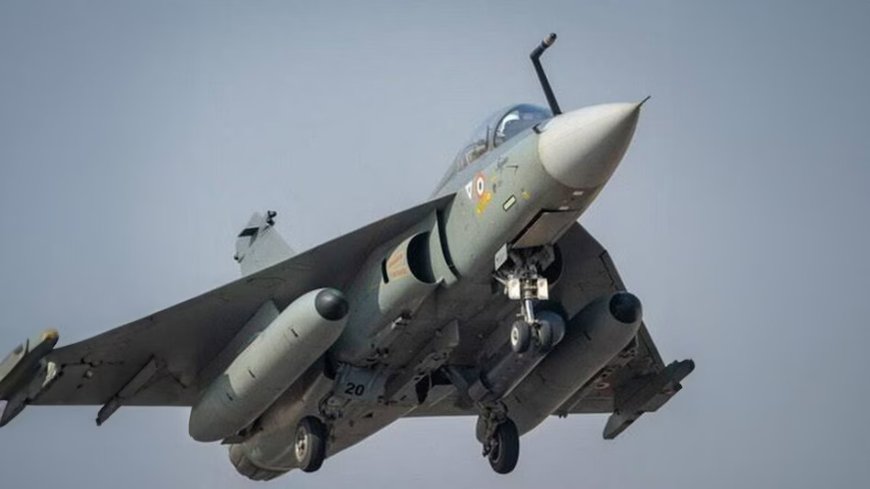HAL Q4 Earnings: Net Profit Declines by 8% to Rs 3,977 Crore; Revenue Falls 7%
Explore the highlights of HAL's Q4 financial results, with net profit falling by 8% to Rs 3,977 crore and revenue decreasing by 7%. Learn what factors contributed to this decline and how the company plans to move forward.

HAL Q4 Earnings: Net Profit Declines by 8% to Rs 3,977 Crore; Revenue Falls 7%
Hindustan Aeronautics Limited (HAL), one of India's premier aerospace and defense manufacturers, has reported its financial results for the fourth quarter (Q4) of the fiscal year. While the company remains a significant player in the defense industry, its latest quarterly results reveal a downturn in both profit and revenue. Here’s a detailed breakdown of the key takeaways from HAL’s Q4 performance.
1. Net Profit Decline: A Drop of 8%
For Q4, HAL reported a net profit of Rs 3,977 crore, marking an 8% drop compared to the previous quarter. This decline in profitability comes as a surprise to many investors and analysts who had expected HAL to maintain or even grow its earnings.
This drop in net profit can be attributed to several factors, which we will explore in greater detail below. However, this decrease is concerning, as it reflects challenges faced by the company in maintaining its usual profitability levels.
2. Revenue Slips 7%
In addition to the drop in net profit, HAL also reported a 7% decline in revenue for the fourth quarter. The company's total revenue for Q4 stood at Rs 20,300 crore, compared to Rs 21,810 crore in the same period last year.
This revenue fall is indicative of weaker demand or delays in fulfilling orders, which can often be common in industries like defense, where production timelines are lengthy and dependent on various factors such as government contracts and international orders. The slowdown in revenue generation adds another layer of concern for the company’s performance in the short term.
3. Factors Behind the Decline
There are several contributing factors that likely played a role in HAL’s lower-than-expected earnings and revenue for the quarter. Some of the key reasons include:
a. Supply Chain Challenges
One of the major reasons for the revenue decline is the ongoing global supply chain disruptions. HAL, which sources several components from both domestic and international suppliers, has faced delays and shortages in raw materials and parts essential for manufacturing. This slowdown in the supply chain has affected its production capacity, leading to a reduction in revenue.
b. Delays in Project Timelines
HAL is involved in the development and production of highly sophisticated and complex systems like fighter jets, helicopters, and aerospace components. These projects often take years to complete and can face delays due to various technical, regulatory, and budgetary constraints. For instance, delays in defense contracts or issues with international customers can lead to a decrease in quarterly revenue.
c. Reduced Government Orders
As a state-owned defense company, HAL’s revenue is heavily dependent on government contracts. In Q4, there may have been a reduction in government orders or slower-than-expected disbursements, which could have negatively impacted the company’s financial performance. If the government’s defense budget allocation was less than anticipated, it could have delayed or reduced the number of orders HAL received during the quarter.
d. Rising Input Costs
Another factor influencing HAL’s financial results is the rising cost of materials and labor. Global inflationary pressures have caused input costs to rise across many industries, and HAL has not been exempt from these challenges. Higher material costs and increased labor expenses can directly affect profit margins, especially in a sector that involves expensive, high-tech manufacturing processes.
4. Focus on the Defense Sector
Despite the quarterly slump, HAL remains a crucial player in India’s defense sector. The company continues to be the primary contractor for the Indian Air Force and Indian Army, producing fighter jets, helicopters, and other critical defense equipment. Its flagship projects, like the Tejas fighter jet and the light combat helicopter (LCH), are still in development, and once these projects reach full production, they are expected to significantly boost HAL’s revenue and earnings.
The defense sector remains one of the most secure industries for long-term growth, as governments across the world, including India, continue to prioritize defense spending. While HAL may face short-term challenges, its strong portfolio of defense products positions it well for future success as international and domestic demand for military technology grows.
5. Looking Forward: HAL’s Plans for Recovery
HAL's management has expressed confidence in turning things around despite the decline in its financial performance. The company is looking at several strategic initiatives to address its current challenges and improve its earnings outlook:
a. Focus on Expanding International Markets
HAL is aiming to increase its footprint in international markets. By exporting defense equipment to other countries, the company hopes to diversify its revenue streams and reduce dependence on the domestic market. Securing international defense contracts can provide the company with a much-needed boost in revenue and help mitigate the effects of reduced government spending.
b. Strengthening Production Capabilities
In order to address supply chain issues, HAL is working to strengthen its production capabilities. This involves investing in advanced manufacturing technologies, expanding its supplier base, and improving internal processes to enhance efficiency and minimize delays.
c. Strategic Partnerships
HAL is also focusing on strategic collaborations with global defense companies to enhance its technological capabilities. Joint ventures with foreign companies can provide HAL with access to cutting-edge technologies and expertise, which can help it deliver more advanced products and attract new customers.
d. Boosting Domestic Orders
At the same time, HAL is working to secure more domestic contracts. With the Indian government’s continued push for "Atmanirbhar Bharat" (self-reliance in defense production), HAL is in a prime position to benefit from increased government investments in indigenous defense projects.
6. Market Reaction and Investor Sentiment
The market’s reaction to HAL’s Q4 results has been relatively cautious, with the stock experiencing a minor dip. However, the defense sector’s long-term growth potential has kept investor sentiment largely positive. Analysts remain optimistic about HAL’s ability to recover in the coming quarters, especially as some of its key projects begin to yield results.
Conclusion: HAL's Path to Recovery
While HAL’s Q4 performance shows a decline in both net profit and revenue, it is important to consider the broader context of the aerospace and defense industry. The company faces challenges that many businesses in this sector encounter, including supply chain disruptions, project delays, and fluctuating government orders.
However, HAL’s strong position in India’s defense sector, its ongoing projects, and its plans for expanding both domestically and internationally offer promising opportunities for future growth. Investors and industry watchers will need to closely monitor the company’s performance in the upcoming quarters to gauge how effectively it navigates these challenges and capitalizes on the opportunities ahead.
By addressing its current issues and focusing on strategic growth initiatives, HAL can work towards restoring investor confidence and returning to a more stable financial trajectory.
This comprehensive breakdown of HAL’s Q4 earnings gives readers a clear understanding of the challenges the company is facing, as well as its strategies for future growth.
What's Your Reaction?





















































